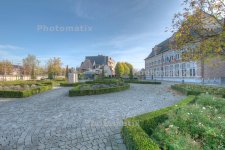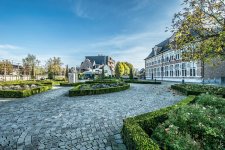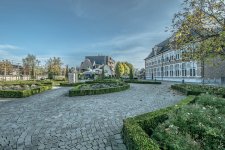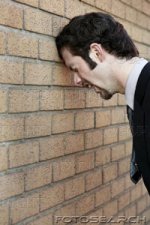Of course I can capture a full tone range. At least as full as the cam is capable. A different exposure only enables me to capture a slightly different tone range. It's not as if exposure enables me to capture more color, it just shifts the middle ground and influences how the captured colors will be displayed.
And
this is where you're missing the point. The highlighted sentence is incorrect. What you are getting is what the camera is capable of capturing
in a single exposure. Every sensor has a bandwidth called "
dynamic range" which describes the number of stops (EV's) that it's capable of capturing in a single exposure. DxOMark puts the Dynamic Range of the D3300 at about 12EV's. That's pretty damn good, and it's likely enough to capture just about everything you'd want in most average outdoor scenes provided you
nail the exposure. But it is nothing compared to what the human eye can see (~24EV), and nothing compared to what the sun can do shining through a small window in an otherwise perfectly dark room.
High Dynamic Range (HDR) Photography allows the photographer to access light information
beyond the capabilities of their camera by capturing multiple exposures bracketed in a way that captures
all available light. The video I linked above with the light shining through the window? Let's assume that's got 18 stops of dynamic range, what with the pitch black corners on the window side and all the bright stuff outside. The
best your camera can manage is any 12 stops of that. The best a D810 can do is 14 stops. That means there's still 4 stops of light information to be had besides the work involved in tweezing out the 12-14 stops you already have - and believe me, getting the extremes of that single shot to look even halfway decent while preserving the color and detail of everything in the center is
not easy.
But, if you bracket that 12 stop "perfect" exposure with 4 shots on either side, you now have 20 stops (EV) of light information across 9 frames, which is actually 2 stops more than you need (which is actually what you want). Now you can truly get everything and do it in a way that will be
far more pleasing to the eye.
That is what HDR Photography is all about!!
There are
way too many good blogs, books and articles out there for you to read if you want, so I'm not going any further. Suffice it to say, if you still don't get why HDR photography is
necessary to capture certain scenes then you're either never going to get it, or you need to clear your mind and dive into it.
Here's my last shot to help you out. Just remember, HDR
is not a
style or a
look, it's a
technique.




